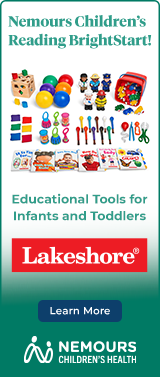Vocabulary development is one of the most exciting aspects of a preschooler’s oral language growth. Although your preschooler will learn many new words during her interactions with others, your child will also benefit from intentional vocabulary experiences. Studies have shown that children need to be familiar with a large number of words to be successful readers, and action words can be particularly difficult for children to learn. Here’s an activity to help make learning action words fun!
- Five index cards with pairs of action words printed on them. For example:
- walk/tiptoe
- run/jog
- drink/sip
- talk/whisper
- march/stomp
Step 1: Gather five index cards and write a pair of action words on each card.
Step 2: Invite your child to play a game with you.
Step 3: Introduce each pair of action words to your child. Demonstrate each action as you talk about the similarities with and differences between each pair of words. For example, you might say:
The words walk and tiptoe are similar because you use your feet to do both. Let’s see how the meanings of these words are different.
Step 4: Demonstrate the meanings of the word pairs from one of the index cards. For example, you might demonstrate the meaning of the word walk by walking around the room. Invite your child to demonstrate the meaning of walk by asking her to walk around the room.
Step 5: Next, demonstrate the meaning of the other word from the pair of action words. For example, you might demonstrate the meaning of tiptoe by tiptoeing around the room.
Step 6: Talk about the action that she is demonstrating. For example, you might say:
When I tiptoe, I walk on the tip of my toes very lightly so that I don’t make any noise. Shhh! Let’s tiptoe!
Step 7: Invite your child to demonstrate the meaning of the second word in the pair of action words.
Step 8: After you have demonstrated all of the action word pairs, place all five of the index cards face down on the floor.
Step 9: Have your child choose a card. Read the pair of action words to her.
Step 10: Invite your child to demonstrate the meaning of each word pair. For example, you might say:
You chose walk and tiptoe. Show me walk. That’s right! You used your whole foot to take each step! Now show me tiptoe. Great! You are walking on the tip of your toes so quietly! Let’s pick another card!
Step 11: Continue with the remainder of the cards until each pair of action words has been demonstrated.
The same activity can be simplified by reducing the number of word pairs. For example, begin with three index cards. Write a pair of action words on each of the three cards. Continue the activity as described above.
To add some challenge to this activity, play a game of Simon Says. Tell your child to do an action only when you begin with the words, Simon Says. If you name an action without beginning with Simon Says, your child should remain still. For example, you might say:
Simon says walk. Simon says march. Now stomp! (Your child should walk and march, but should not stomp.)
Take turns with your child. Invite your child to lead as Simon while you demonstrate the action. Remind her to say Simon says before announcing some of the actions and not others.








